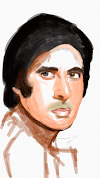How to Differentiate Between Male and Female Shirts
Differentiating between male and female shirts can be subtle but noticeable once you know what to look for. Here are some key differences:
- Fit: Male shirts typically have a boxier or straighter fit, while female shirts are often tailored to be more form-fitting and curve around the body.
- Shoulder Width: Male shirts usually have broader shoulders compared to female shirts, which have narrower shoulder widths to accommodate the female anatomy.
- Length: Female shirts tend to be shorter in length, especially in the torso area, to complement the proportions of the female body. Male shirts may have longer lengths.
- Seams: Female shirts may have princess seams, which are curved seams that run from the armhole to the hem, providing a more fitted silhouette. Male shirts typically have straight seams.
- Buttons and Placket: Female shirts may have buttons on the left side, while male shirts usually have buttons on the right side. Additionally, the placket (the strip of fabric where the buttons and buttonholes are located) may be narrower on female shirts.
- Neckline: Female shirts may have lower or more open necklines compared to male shirts, which often have higher necklines.
These are general guidelines, and there may be exceptions depending on the style and brand of the shirt. When in doubt, checking the size and trying on the shirt can also help determine whether it's designed for a male or female body.















0 Comments